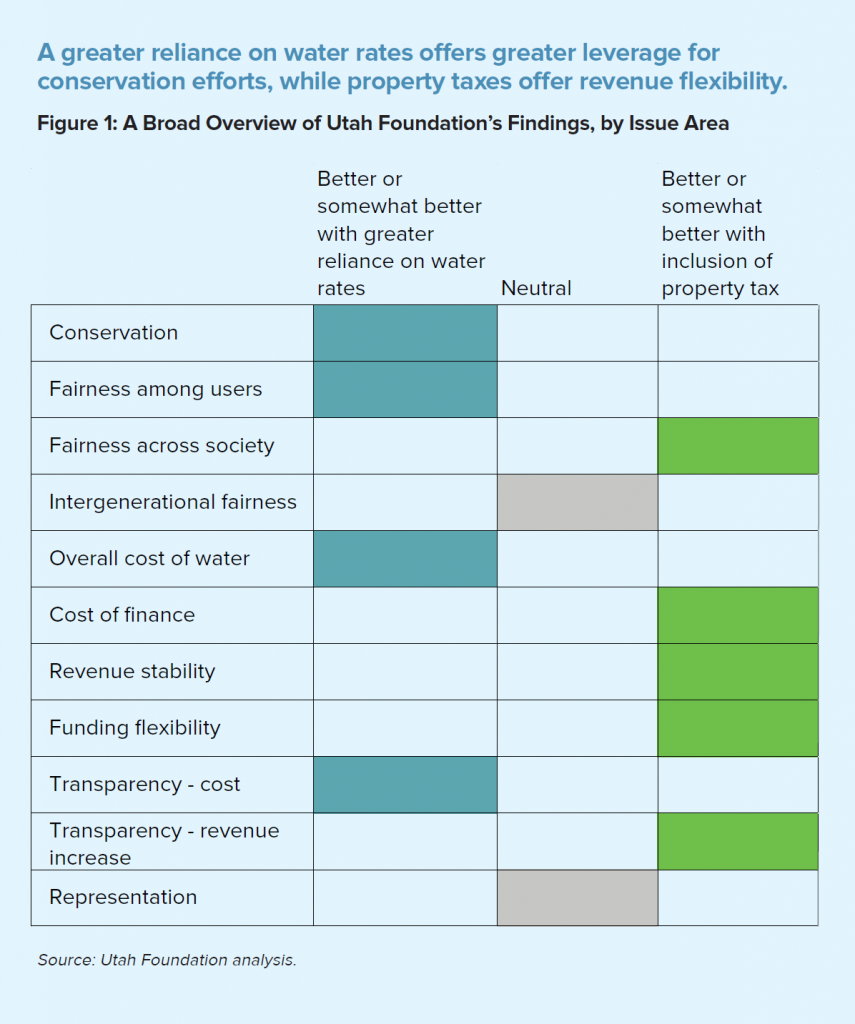Utah ranks as one of the nation’s driest states — and one of the fastest-growing. It is therefore essential that Utah’s water is well managed to ensure the sufficiency of affordable, quality water into the future. Utah Foundation’s series of water reports discusses Utah’s reliance on both water rates and property taxes to fund water infrastructure, operations and maintenance.
Paying For Water Series
This series contains four parts as outlined below.
• Entire Report: Paying for Water: How Water Finance Impacts Utah
• Executive Summary: Paying for Water: A Brief Summary of the Series
• Part 1 – Background: High and Dry: Water Supply, Management and Funding in Utah
• Part 2 – Conservation: Drop by Drop: Water Costs and Conservation in Utah
• Part 3 – Fairness: Who Gets the Bill? Water Finance and Fairness in Utah
• Part 4 – Practical considerations: Getting Clear on Water: Practical Considerations in the Tax Versus Fee Debate
Throughout this series, Utah Foundation outlines the costs and benefits of a greater reliance on water rates, and how this might affect each of the areas of concern. During the course of this research, Utah Foundation identified a number of potential solutions to help mitigate or alleviate the negative consequences of either funding method. For example, water providers that use property taxes but are concerned about fairness might charge differential rates reflective of property tax contributions. Similarly, water providers that rely primarily on water rates and fees can address revenue stability by building large reserves or more frequently re-evaluating rates.

Utah water providers have a number of challenges to tackle. They also have a large range of geographic, climatic, economic and demographic factors to consider as they chart the best course forward. Getting the analysis right is a matter that will echo into the future.

